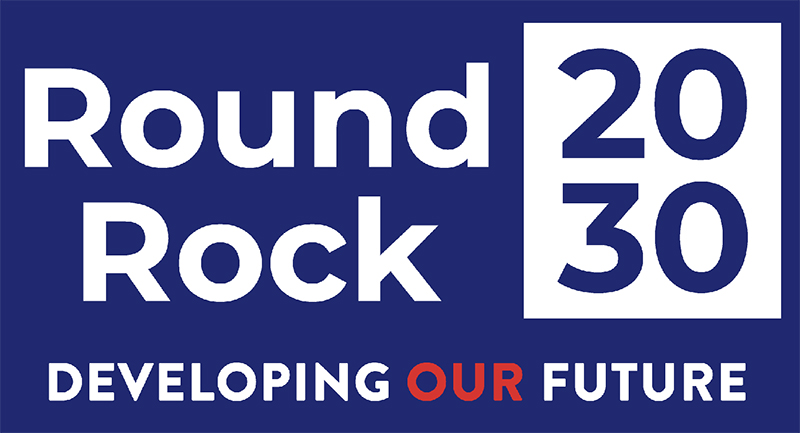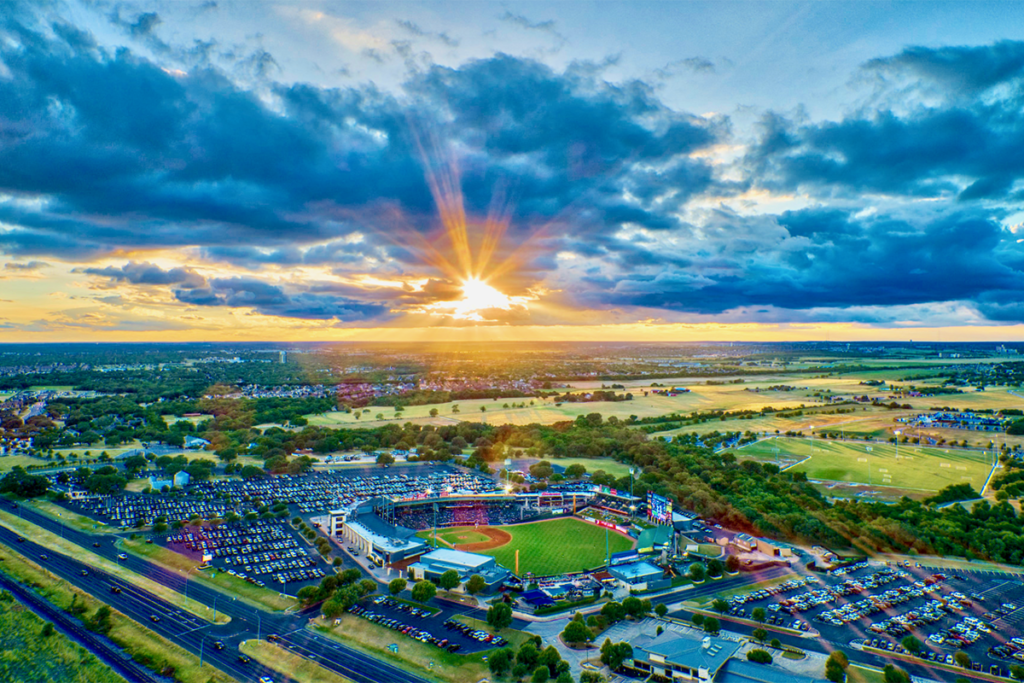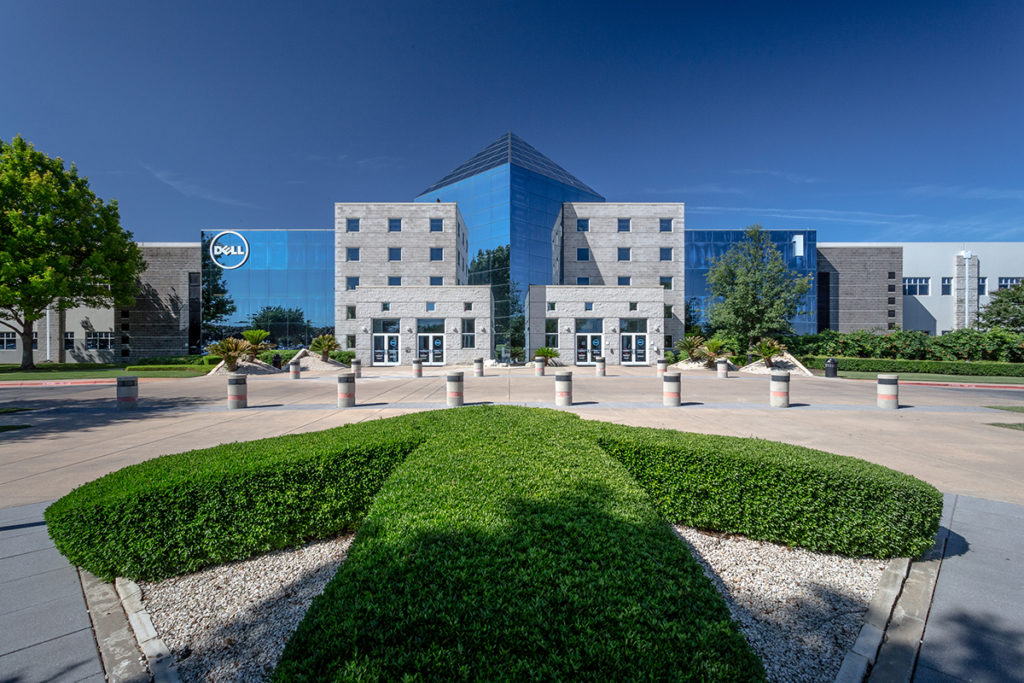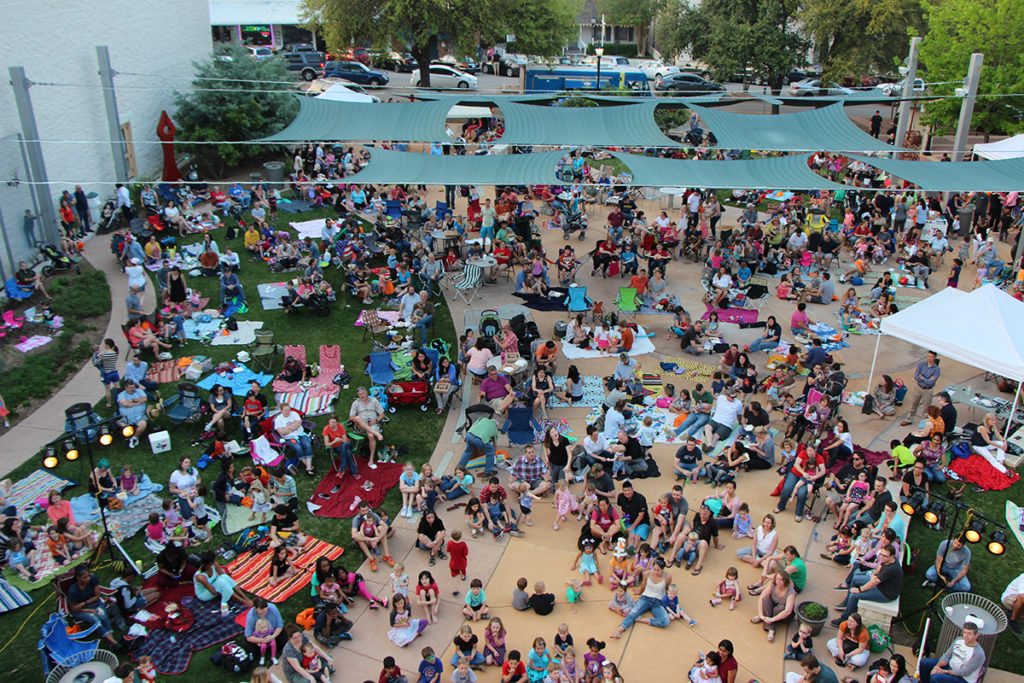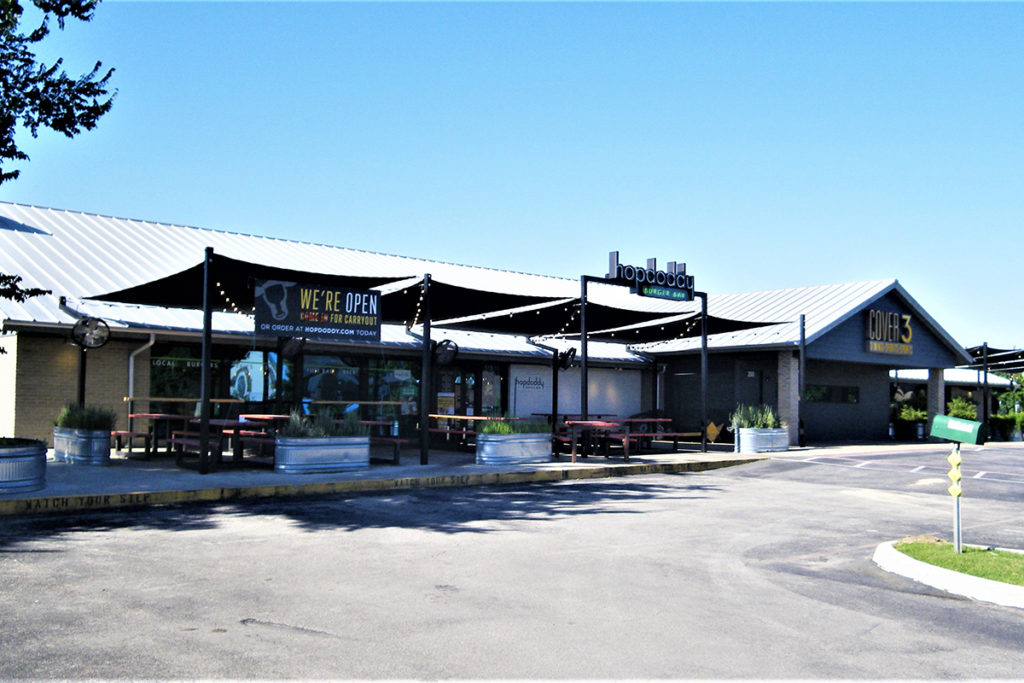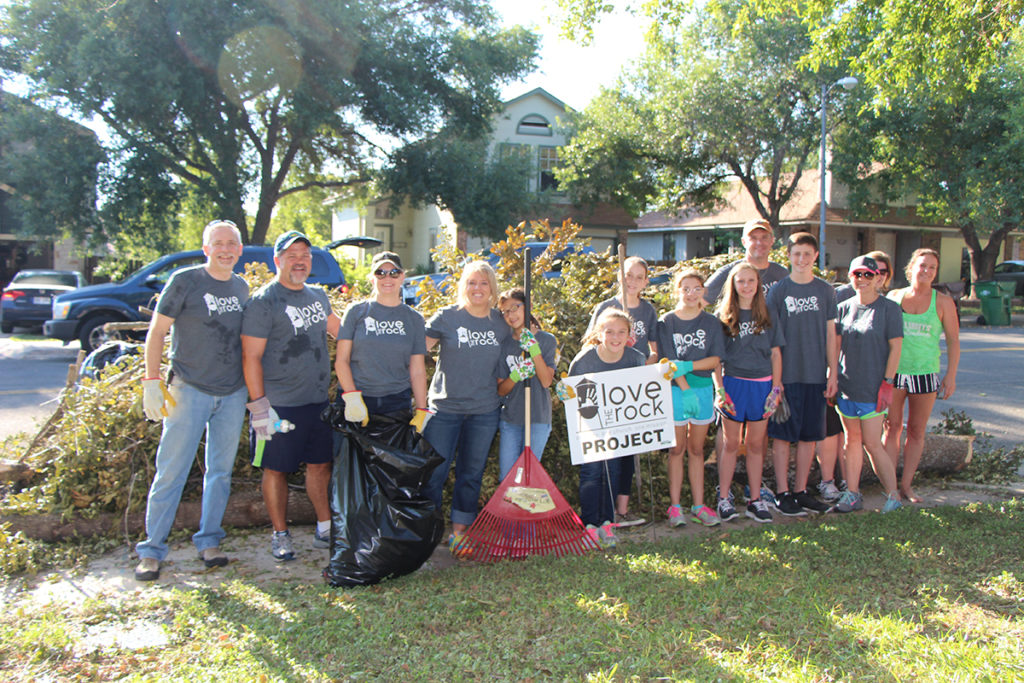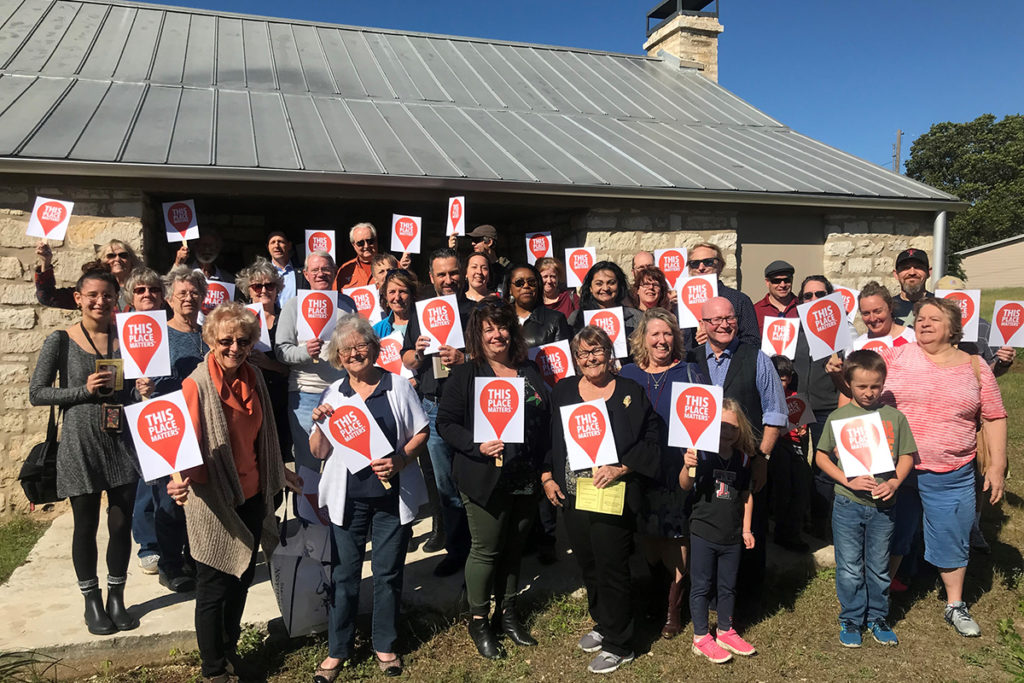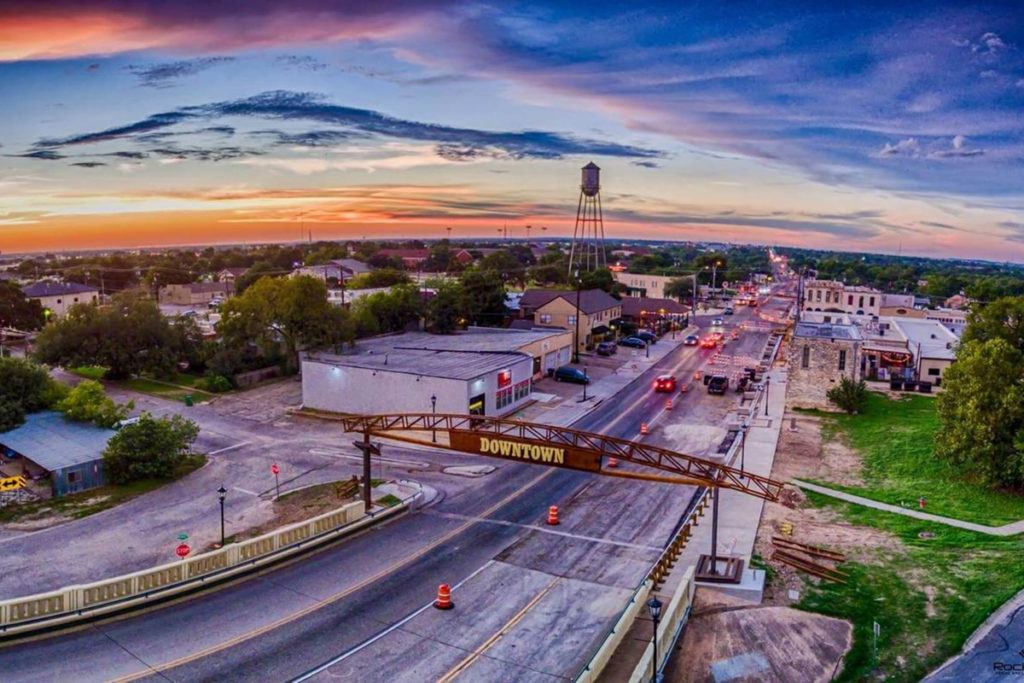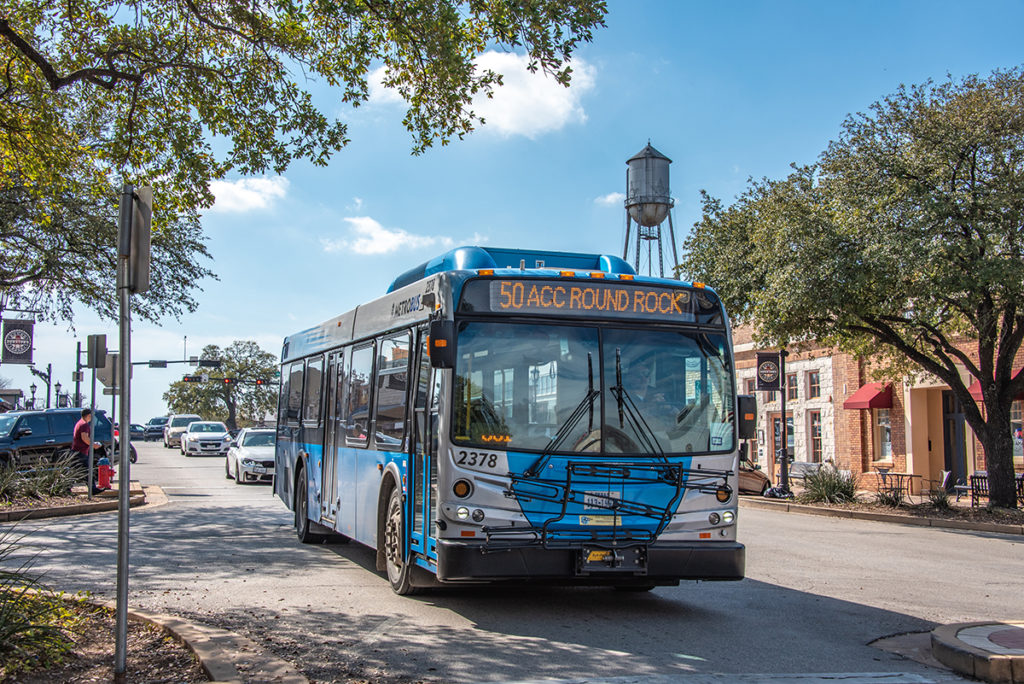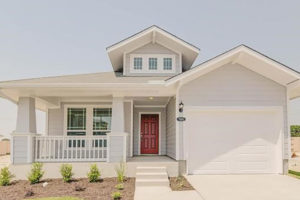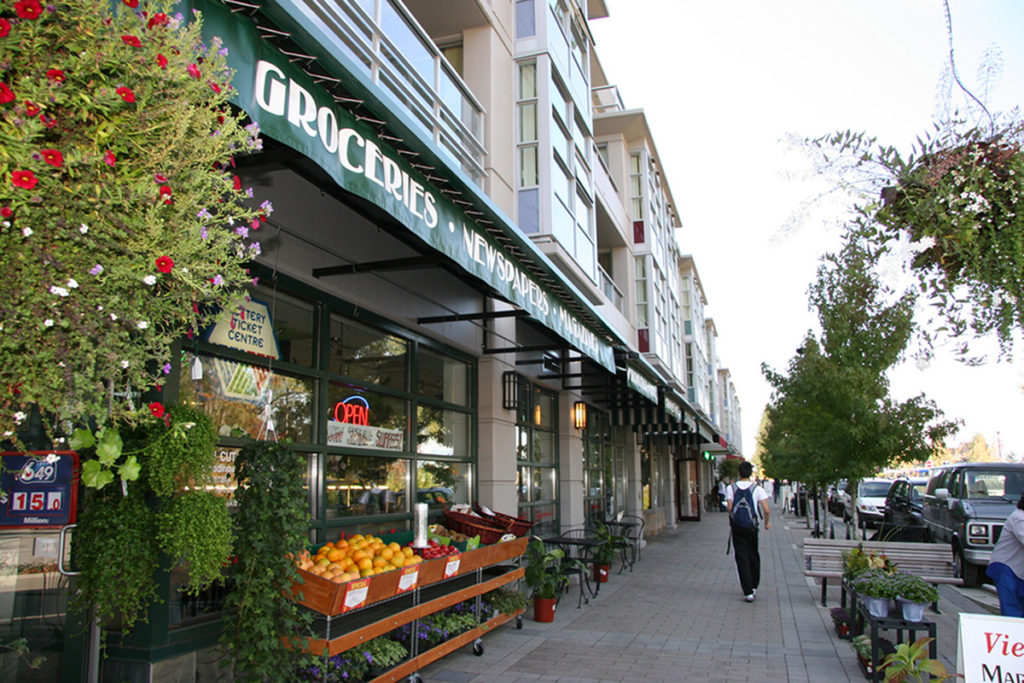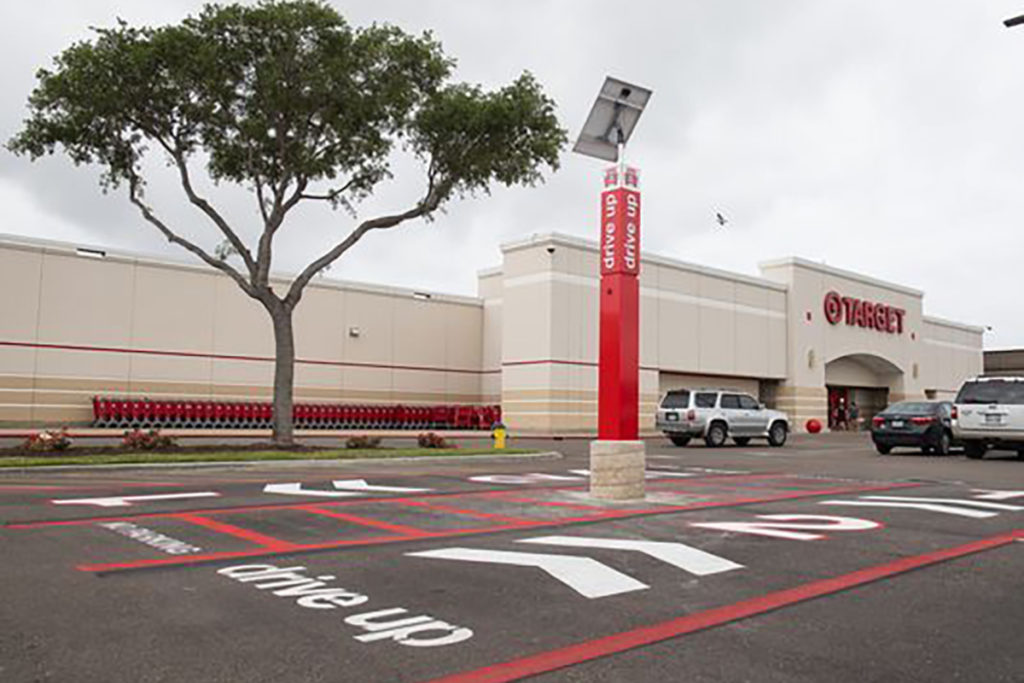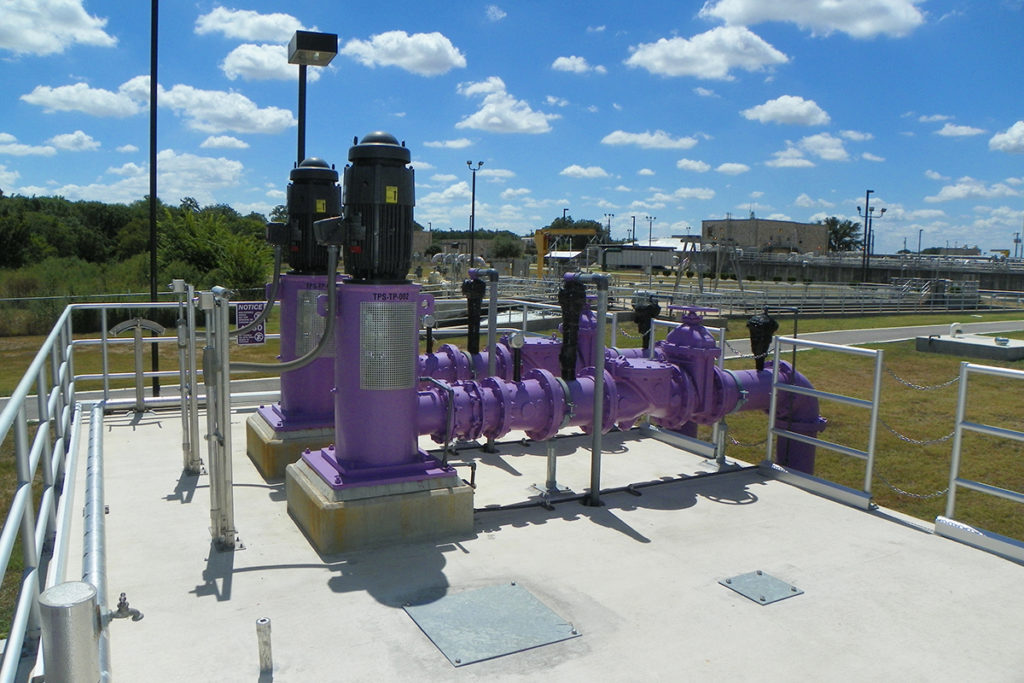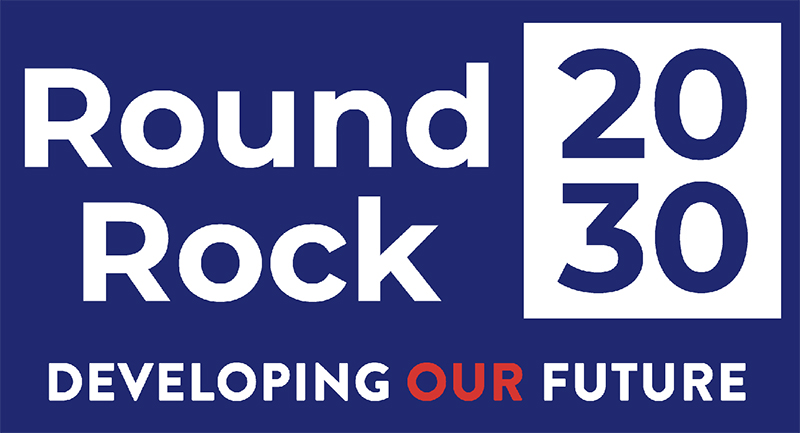POLICIES AND IMPLEMENTATION
POLICIES AND IMPLEMENTATION
The vision, policies, and implementation strategies are central components of Round Rock 2030 and guide land use decisions for the next decade. During plan development, a series of activities within each phase of public engagement resulted in specific content included in Round Rock 2030. Visioning exercises allowed participants to provide their individual visions for Round Rock’s future. The results from this exercise eventually became the Round Rock 2030 vision statement. Public input also shaped the twelve policies that form the basis of Round Rock 2030.
Vision Statement
The Round Rock 2030 vision is a concise, future-oriented statement that provides a clear picture of what Round Rock will be like in 2030. The vision statement was drafted based on public input, current planning trends, and other City of Round Rock plans.
Round Rock is a safe, desirable, family-oriented community that balances progress and prosperity with its history, by prioritizing quality of life, mobility, economic development and thoughtful land use planning.
Round Rock 2030 Policies
Each of the twelve policies pertains to a specific planning topic and include actions that can be taken to implement the Round Rock 2030 vision. Click on the links below to read the policy description and implementation strategies for each policy.
Quality of Life
Focus economic development initiatives on those that improve quality of life while remaining fiscally responsible. Invest in community gathering spaces for all ages that support the arts, culture, recreation, and entertainment.
Economic Development
Continue to be the “City of Choice” for new and existing businesses by focusing on quality development standards that promote and sustain economic growth while providing sufficient infrastructure and services.
Downtown
Manage and guide the revitalization of downtown as a safe and pedestrian-friendly community destination for all.
Commercial Centers
Foster maintenance, reuse, or redevelopment of aging commercial centers while adapting to shifts in consumer preferences.
Roadway Function
Enhance the function and appearance of transportation corridors while accommodating safe pedestrian and bicycle travel where feasible.
Mobility
Develop transportation options within and between neighborhoods and local destinations.
Housing
Enable a mixture of housing types within the city to meet all residents’ needs and preferences through all stages of life.
Mixed-Use
Encourage mixed-use development in locations that are compatible with the surrounding area and supported by employment and transportation infrastructure.
Adapting to Change
Adapt development codes to reflect transportation innovations, evolving technology, and changing consumer preferences.
Sustainability
Promote environmental sustainability by facilitating energy efficient development that conserves natural resources and open space.
Quality of Life
Focus economic development initiatives on those that improve quality of life while remaining fiscally responsible. Invest in community gathering spaces for all ages that support the arts, culture, recreation, and entertainment.
Policy Description:
This policy was created to prioritize quality of life initiatives tailored to Round Rock residents. Public input revealed a desire for more cultural and entertainment activities throughout the city. This policy is meant to encourage the creation of gathering spaces for residents, while ensuring that public funds are spent wisely to develop, attract, and/or incentivize these types of amenities.
Implementation Strategies:
- Create focal points, destinations, public spaces, and concentrated areas of desired development that promote the quality of life in Round Rock and create a sense of place.
- Assist Round Rock Arts and private patrons in locating space for a new arts and cultural center that could accommodate a variety of functions.
- Ensure that new city-owned amenities, such as a new downtown library and downtown parklets, contribute to the quality of life of residents and further the redevelopment goals of the Downtown Master Plan.
- Support the development of economic generators that are unique to Round Rock and improve quality of life. Specifically, projects should help Round Rock become a self-contained community with publicly and privately generated jobs and amenities. Proposed projects to be completed over the next decade include:
- Project Tower: a 76,000 square foot office/retail/hotel project surrounding the historic downtown Water Tower.
- The District: a 65-acre mixed-use development located south of SH 45 and west of Greenlawn Boulevard that will include approximately one million square feet of residential, hospitality, retail and Class A office space.
- Heritage Trail and Bathing Beach Park: The Heritage Trail is a major recreational corridor planned along the Brushy Creek Regional Trail that will connect two of Round Rock’s historic areas: its original pioneer settlement “Old Town” and its railroad-era “New Town.” A park along the trail in Old Town near The Round Rock includes the recently relocated 1850’s Stagecoach Inn.
- Round Rock Amphitheater: Formerly known as the Nutty Brown Amphitheater, an outdoor concert venue previously located Southwest of Austin, will relocate to Round Rock east of IH35 and south of University Boulevard.
- Kalahari Resorts: a waterpark, theme park, hotel, and convention center located on US Highway 79 across from Dell Diamond.
- Create a Planned Unit Development for the Henna tract at US Highway 79 and Mays Street as a catalyst project implementing the Downtown Master Plan.
- Explore, attract, enable, and facilitate pilot projects such as drive-in movies, pop-up uses, and other temporary uses in appropriate locations while limiting unintended consequences of non-permanent structures.
- Amend ordinances to maximize public access to open space.
- Use public input to identify land uses associated with improving the quality of life of the community, particularly dining and entertainment options. Create programs to attract and incentivize the identified uses.
- Consider locations for cultural development and community facilities outside of the downtown area.
Economic Development
Continue to be the “City of Choice” for new and existing businesses by focusing on quality development standards that promote and sustain economic growth while providing sufficient infrastructure and services.
Policy Description:
Based on public input received, this policy aims to maintain and promote the city’s business-friendly environment. Round Rock’s continued goal of a prosperous economy requires successful development, including providing infrastructure necessary to support growth. The city is committed to maintaining the highest levels of attractiveness and competitiveness possible to allow Round Rock to remain the “City of Choice” for businesses. The Planning and Development Services Department (PDS) operates under the guidance of the city’s Development Philosophy, which emphasizes customer service to facilitate the timely review and approval of development projects, as well as ensuring that stakeholders are included in the creation of regulatory ordinances.
Implementation Strategies:
- Evaluate and update the Future Land Use Map (FLUM) during the ten-year Plan period to ensure appropriate land uses are identified.
- Attract and support the development of new and existing economic generators that are unique to Round Rock and improve quality of life.
- Continue to provide a navigable regulatory and development review process that is efficient, streamlined, and meets or exceeds established performance measures.
- Re-examine the Round Rock Development Code on a continual basis to determine if amendments are necessary based on changes to state law. Develop incentives as necessary to ensure desired outcomes concerning design and development standards.
- Support zoning and annexation decisions that attract desirable employment centers to the Northeast and consider appropriate incentives.
- Prioritize infrastructure projects associated with regional attractions, downtown, and major employers.
- Support the development of the Harris tract to the west of Kalahari Resorts so that new development is complementary but has its own unique attributes that add momentum of the area’s status as a regional attraction.
- Explore new uses for older commercial centers when neither the structures nor the center’s location meet the needs of the market. Redevelopment may include increased densities and/or relaxing certain development standards or fees.
- Continue offering an expedited development review process for economic development projects.
- Explore options for providing incentives for the use of masonry exterior building materials.
- Examine the potential for redevelopment in certain transitional areas of the city.
- Strategically support and identify areas for the public acquisition of certain private properties to ensure desirable redevelopment in critical corridors, preserve the city’s history, and enhance downtown.
Downtown
Manage and guide the revitalization of downtown as a safe and pedestrian-friendly community destination for all.
Policy Description:
The revitalization of downtown Round Rock has been a long-term investment and priority for the city. Round Rock adopted the Downtown Master Plan in 2010 and has invested $116.9 million in public infrastructure and facilities since then. The Master Plan created a design and policy strategy for a thriving town center featuring a viable mix of retail, dining, entertainment, residential and public spaces, in a walkable and historically sensitive environment. Downtown’s unique character and mix of activities make it different from anywhere else in Round Rock. Anchored by a National Register Historic District, mixed-use zoning districts support redevelopment while balancing preservation of existing building and development patterns. Public input indicated that residents desire an active downtown with a wider variety of businesses, housing options, and gathering spaces where safety is a priority. Specifically, teenagers would like downtown to be a destination with places to gather and spend their leisure time. This policy focuses on the desire to create a greater mixture of land uses that will serve everyone in the community, thus giving everyone multiple reasons to be downtown on any given day.
Implementation Strategies:
- Facilitate a mixture of residential development types. Strive to develop a minimum of 1,000 dwelling units within one-quarter mile of Main Street.
- Complete the redevelopment process for the site surrounding the Water Tower.
- Consider techniques for activating alleys and seek out mechanisms to fund unique projects in the alleys.
- Ensure that the city’s proposed new library is integrated into the streetscape with an active first floor.
- Examine and determine the future of Main Street parklets once the initial phase is installed.
- Ensure balance between residential and business uses downtown by encouraging compatibility. Mitigate negative impacts to residents and prevent clustering of any one type of commercial use.
- Conduct a parking study to ensure adequate and appropriately located parking downtown.
- Prioritize infrastructure improvements such as upgrades to streets, utilities, and drainage through the implementation of the Downtown Improvement Plan.
- Ensure the connectivity of the Henna tract to downtown and examine further integration of Brushy Creek as a publicly accessible amenity.
- Conduct an inventory of potential redevelopment and infill sites, including historic structures that would be suitable for adaptive reuse. Devise a strategy for appropriate incentives.
- Evaluate MU-1 (Mixed-Use Historic Commercial Core) district, MU-2 (Mixed-Use Downtown Medium Density) district, and MU-L (Mixed-Use Limited) district standards to ensure they continue to be suitable as downtown redevelops.
- Improve the downtown pedestrian experience by providing features such as pet stops, shade structures, and litter control facilities.
- Explore options to attract retail other than dining downtown.
- Ensure adequate loading areas for equipment, deliveries and passenger drop off and pick up.
- Inventory existing ADA facilities and parking downtown to ensure they continue to meet people’s needs.
- Assess connectivity to downtown from surrounding areas for all modes of transportation.
Commercial Centers
Foster maintenance, reuse, or redevelopment of aging commercial centers while adapting to shifts in consumer preferences.
Policy Description:
Based on public input received, stakeholders would like the city to focus on improving and maintaining existing retail centers. This policy prioritizes revitalization and repurposing of aging, vacant, or declining commercial centers. This includes examining options for improving the appearance along roadway corridors adjacent to older commercial centers. This policy also recommends considering how changing preferences of consumers such as online shopping and curbside order pick-up affect the long-term viability and layout of commercial developments in the future.
Implementation Strategies:
- Create ordinances to foster quality and economically feasible rehabilitation, re-use and redevelopment of aging commercial developments. These should include incentives to assist with comprehensive redevelopment through specific financing mechanisms and agreements.
- Complete corridor revitalization and enhancement starting with Mays Street from Gattis School Road to Mays Crossing Drive. Evaluate successes to determine how to apply the process to other portions of the roadway and other roadway corridors in the city.
- Examine, propose, and implement strategies that encourage adaptive reuse of aging commercial centers in areas identified for revitalization. If successful, consider developing grant programs for façade improvements, landscaping, and signage.
- Devise and propose parameters for development fee reductions for projects slated to be part of a redevelopment program effort.
- Strategically purchase private property to guide redevelopment.
- Identify key redevelopment locations, especially large tracts on important commercial corridors.
- Encourage compact commercial redevelopment in appropriate locations.
- Strive to maintain traffic flow along roadways through the minimization of curb cuts for commercial centers.
- Continue to monitor changes in sign technology to ensure that the needs and desires of developers are balanced with the design standards desired by the city.
- Consider how to address vacancies, especially for uses in changing markets like retail and banks.
- Consider commercial code enforcement standards beyond sign regulation enforcement in order to address issues like building maintenance, parking lot maintenance, and landscape ordinance enforcement.
Neighborhoods
Maintain older neighborhoods to ensure longevity and desirability.
Policy Description:
Based on public input received, a high percentage of Round Rock residents are happy with their neighborhoods. Stakeholders also think that the city should maintain its heritage and roots. The city has a strategic goal to foster sustainable neighborhoods, both old and new, through a series of strategies that focus on maintaining property values in older neighborhoods, creating a sense of community between neighbors, reducing code violations, and providing a point of contact for residents to understand city services that pertain to neighborhood quality of life.
Implementation Strategies:
- Promote the Community Development Division of Planning and Development Services as a point of contact for residents to navigate city services.
- Establish neighborhood planning programs, especially in older, deteriorating neighborhoods. • Continue to review zoning ordinances to provide more flexibility for infill development including missing middle housing, limited commercial, and office.
- Focus Community Development Block Grant funds on neighborhood revitalization in low to-moderate income neighborhoods. Focus expenditures on sidewalk installation, park improvements, and home repairs.
- Create ordinances to foster quality and economically feasible rehabilitation, re-use, and redevelopment of aging commercial developments and neighborhoods.
- Support and encourage neighborhoods that do not have homeowners associations to form neighborhood associations by proactively hosting meetings and events to demonstrate the benefits of forming an association.
- Continue existing and create new programs to keep neighborhoods active and engaged such as the Tool Lending Center, Block Party Trailer, Movie Kit, Curb Painting Kit, Fence Staining Kit, Pole Tree Saw Program, Lawn Care Foster Program, Sierzega Unit and UniverCity.
- Consider lighting options to address citizen concerns about safety. Facilitate requests for assessments to determine if additional lighting is needed in certain neighborhood areas.
- Create a formal process for identifying infrastructure needs of older neighborhoods and identify potential shared resources to fund improvements.
- Explore options for a range of housing that could be added to existing single-family neighborhoods.
- Continue to coordinate and connect Neighborhood Services and Code Enforcement. Analyze Code Enforcement violations to create programs to assist residents with compliance. Examples of existing programs include neighborhood cleanups, the Lawn Care Foster program, and the Pole Tree Saw program.
- Continue to explore innovative pilot programs that support neighborhood quality and sense of community based on issues identified in neighborhoods.
Historic Preservation
Preserve buildings and sites that contribute to Round Rock’s history.
Policy Description:
Public input received indicated that residents are very supportive of historic preservation and feel that the city should protect sites and structures that represent the heritage and history of Round Rock. Round Rock has had a historic preservation program since 1979. Historic assets play an essential role in shaping the identity of a place. Historic buildings, neighborhoods, and other important vestiges of the past define a unique and special sense of character in a community. As Round Rock continues to grow and mature, its historic resources remain an important part of the community’s identity. Historic preservation encourages the continued use of older properties, safeguards the existence of significant historic elements, and contributes to community development objectives such as quality of life, sustainability, and economic development.
Implementation Strategies:
- Explore means for financing the city’s historic preservation program including a new dedicated annual allocation in the city’s budget.
- Complete the restoration of the Stagecoach Inn.
- Consider new incentive programs specifically to assist property owners and developers with maintenance and rehabilitation of historic properties.
- Continue administering the Partial Tax Exemptions for Historically Significant Sites program and guide property owners through the application review process.
- Consider expanding the number of historically designated properties. Review the designation criteria in the Round Rock Development Code to adapt the definition of historic significance. Identify structures recently annexed into the city and mid-century structures which are now, or will soon be, eligible for designation.
- Explore establishing a historic district for the Downtown Master Plan area which regulates exterior building materials for all structures.
- Establish a policy to address whether performance advances in building materials could, in certain circumstances, justify the application of non-historic materials to aid the long-term preservation of historic structures.
- Establish methods, guidelines, priorities, and a dedicated funding source for preservation of city-owned historically designated properties.
- Contribute historic preservation expertise to ensure the development surrounding the Water Tower is contextually appropriate and does not diminish the Tower’s historic integrity.
- Advise the Parks and Recreation Department regarding historic features of the Bathing Beach Park and Heritage Trail projects.
- Foster a network of preservation advocates and allies, like the nonprofit Round Rock Preservation, by collaborating with preservation partners at the local, regional, and state levels.
- Support the Williamson Museum’s efforts to continue local history programming in Round Rock.
- Partner with other preservation organizations to create a local historic preservation award program to recognize preservation success stories.
- Create opportunities to record and celebrate the history of the city through a local history archive and resources at the new library.
- Increase focus on heritage tourism citywide through promotion of the city’s historic assets. Consider becoming a designated Preserve America community.
- Capitalize on historic assets as an economic engine for Round Rock by promoting historic sites to areas outside of the city.
- Increase stakeholder and public awareness of the city’s historic preservation program by providing training opportunities, hosting public events, and creating educational materials.
Roadway Function
Enhance the function and appearance of transportation corridors while accommodating safe pedestrian and bicycle travel where feasible.
Policy Description:
This policy prioritizes improving and connecting infrastructure for all forms of transportation. Currently low-density, single-use neighborhoods occupy significant amounts of land in the city and require the use of a personal vehicle to access employment and services. Based on public input received, pedestrian safety and walkability were major concerns associated with roadway design. In addition to function, this policy also focuses on the appearance of transportation corridors which are especially important for gateway corridors that welcome people into the city. This was also a point of emphasis in the Garner Economics, LLC report Building Upon a History of Success: An Economic Development Action Plan for Round Rock, Texas as it relates to economic development and attracting desirable redevelopment in aging areas.
Implementation Strategies:
- Establish streetscape design guidelines for city roadways to ensure compatibility with current and planned land uses.
- Consider and prioritize corridor studies to determine future corridor enhancement programs for roadways.
- Pursue the feasibility of a comprehensive street tree program and identify priority areas for implementing such a program.
- Adopt standards for shared-use paths that are at least ten feet wide and can be utilized by both cyclists and pedestrians.
- Consider pedestrian safety improvements at intersections, including but not limited to the creation of safer and more obvious places to cross arterials and better signage/visibility to ensure drivers are aware of pedestrian activity.
- Consider chicanes or other traffic calming measures on roadways where the city receives frequent complaints about speeding.
- Design single-loaded streets to provide access to open spaces where possible.
- Encourage attractive xeriscaping and design elements in medians and high traffic areas.
- Explore options for park-and-ride lots and rideshare parking.
Mobility
Develop transportation options within and between neighborhoods and local destinations.
Policy Description:
This policy prioritizes connectivity and mode of travel around Round Rock. This includes developing sidewalk and trail networks and expanding public transit. The city recently introduced limited bus service within Round Rock and a commuter line that connects Round Rock to Austin. Public input indicated that people would like to travel throughout Round Rock without experiencing major traffic delays. While congestion due to growth is unavoidable, developing and expanding the number of transportation options in Round Rock could reduce the number of vehicles on the road.
Implementation Strategies:
- Increase neighborhood connectivity of streets, trails, and bike lanes.
- Use subdivision platting and site development processes to ensure connectivity for a variety of transportation options. Examples of requirements include cross access between commercial uses, sidewalk construction, and connectivity indicators in new residential development.
- Consider pedestrian safety improvements at intersections, including but not limited to the creation of safer and more obvious places to cross arterials and better signage/visibility to ensure drivers are aware of pedestrian activity.
- Assess mobility needs for underserved populations from a land use perspective.
- Facilitate expanded fixed-route bus service including the addition of a transit stop in The District mixed-use development proposed south of SH 45 and west of Greenlawn Blvd.
- Evaluate parking demand to determine whether a park and ride location or expansion of the Transit Center downtown garage is appropriate to accommodate commuters.
- Ensure the connectivity of neighborhoods to the trail system identified in Playbook 2030: Building a Connected Community.
- Ensure mobility to and around regional attractions identified on the Future Land Use Map (FLUM).
- Evaluate the MoKan corridor (from Georgetown to Austin) as a regional transportation and transit mobility solution.
- Evaluate potential impacts of bike share and micromobility options to balance community needs and city policy preferences.
- Develop transit stop infrastructure and amenities including shade structures, benches, and trash receptacles.
- Develop a plan to manage parking supply and demand in large developments to ensure the efficient use of land.
- Reevaluate off-street parking requirements for all land uses.
- Assess connectivity to downtown from surrounding areas for all modes of transportation.
Housing
Enable a mixture of housing types within the city to meet all residents’ needs and preferences through all stages of life.
Policy Description:
The vast majority of the city’s housing stock exists in a conventional suburban form with separate residential subdivisions containing single-family homes or standalone apartment complexes. Currently, low-density single-use neighborhoods occupy significant amounts of land in the city and require the use of a personal vehicle to access employment and services. Based on public input received, housing affordability was a main concern of stakeholders. Certain housing types in the city have been identified as missing in Round Rock, such as smaller-scale multifamily developments. Other types of housing, such as senior living, were identified to address the changing needs of residents over their lifetimes so they can continue to live in Round Rock.
Implementation Strategies:
- Strive to limit two and three story walk-up multifamily units to 20% of the housing stock to the extent feasible, except when located in mixed- and multi-use areas.
- Examine tools to provide incentives for specific dwelling types that do not currently exist in Round Rock or where more units are desired.
- Provide information regarding affordable housing initiatives and programs available to Round Rock residents.
- Examine parking and garage requirements for all residential types.
- Consider amendments to the small lot requirements of the Round Rock Development Code or the creation of a new zoning district to facilitate more affordable single-family homes
- Research best planning practices concerning tiny homes and other housing trends to consider integration into the Round Rock Development Code.
- Explore policies for allowing accessory dwelling units in neighborhoods including specific criteria and design features except where prohibited by homeowners associations.
- Consider rezoning proposals that facilitate the development of missing middle housing. Examples might include low-density townhome and multifamily integrated into neighborhoods, multiple units on one lot, identification of corridors where condominium arrangements are small detached or attached units, high rise multifamily in mixed-use developments, and small lot single-family neighborhoods with special parking requirements.
Mixed-Use
Encourage mixed-use development in locations that are compatible with the surrounding area and supported by employment and transportation infrastructure.
Policy Description:
The intent of mixed-use zoning districts is to permit flexibility in land uses and building densities not accommodated by traditional zoning districts. This allows a variety of uses to locate in the same building, site, or block, and in structures of varying size and design. Commercial and residential uses, which are usually separated into distinct zoning districts, are encouraged to be combined with offices and public open spaces. The close proximity of the different land uses fosters increased pedestrian activity, as residents are able to accomplish a wide variety of tasks in a relatively small area without driving. Additionally, this type of development allows for the more efficient provision of infrastructure and natural resources.
Implementation Strategies:
- Promote mixed-use options where opportunities exist already by zoning. Ensure that regulations work for the types of developments being proposed.
- Identify and provide incentives for the provision of certain housing unit types and specific commercial components within a mixed-use development.
- Encourage housing units where appropriate as part of mixed-use development.
- Evaluate and incentivize the incorporation of transit stops in mixed-use areas like the proposed District development south of SH 45 and west of Greenlawn Blvd.
- Attract and incentivize a development like the Mueller neighborhood in Austin.
- Develop a strategy to acquire underutilized parcels of land to guide redevelopment as mixeduse, higher-density urban-style projects in appropriate locations.
- Incentivize downtown mixed-use projects including opportunities for small lot infill developments.
- Encourage and incentivize large-scale mixed-use projects on vacant properties such as the Harris tract (west of Kalahari Resorts), the Robinson tract (south of RM 620) and the Georgetown Railroad tract (west side of IH-35 at the intersection of RM 1431). These tracts are identified as mixed-use on the Future Land Use Map in Round Rock 2030.
Adapting to Change
Adapt development codes to reflect transportation innovations, evolving technology, and changing consumer preferences.
Policy Description:
This policy focuses on the impacts that growth and changing lifestyles will have on Round Rock’s land use in the next decade. Recent trends in transportation such as ridesharing, autonomous vehicles and the introduction of high-speed transit may change the way people move within and between cities. Advances in technology are also shaping the way people access goods and services. Adjusting development codes related to site development layout, building design, and parking standards allow the city to address changing patterns in transportation and consumer preferences, which ultimately impact land use.
Implementation Strategies:
- Prepare for changes in transportation technology that would result in impacts on land use and site layout.
- Examine how regional attractions impact land use change around them.
- Evaluate parking lot standards in the Round Rock Development Code, especially for retail. Consider site development impacts of total parking requirement, drive-throughs, drive aisles, order pick-up, and drop-off areas.
- Consider creating a pilot program for tiny homes, accessory dwelling units, and other trending housing types.
- Monitor the presence of obsolete commercial building designs when vacated to ensure future reuse or redevelopment.
- Establish a policy to address whether performance advances in building materials could, in certain circumstances, justify the application of non-historic materials to aid the preservation of historic structures.
- Consider how demographic changes impact needs of the community, including housing supply.
- Examine how communications innovations impact how public information and notices pertaining to planning and development projects are distributed and shared.
- Consider land use and physical design implications related to modernization of communications infrastructure, while ensuring the accommodation of a more advanced network.
- Examine how a new downtown library will influence surrounding land uses.
- Form partnerships with Round Rock Independent School District and higher education institutions by creating city programs that increase awareness of planning issues via internships, externships, and mentoring programs.
- Evaluate temporary use permitting to recognize how changing consumer preferences for temporary uses affect parking and land use.
- Evaluate potential impacts of bike share and micromobility options to balance community needs and city policy preferences.
- Develop a comprehensive plan checklist for use in evaluating development proposals for consistency with the Plan’s vision and goals.
- Conduct a comprehensive plan review periodically to consider Plan amendments and refinements based on changes to the community, the economy, technology or other factors.
- Establish a process for regular assessment of Plan implementation progress.
- Utilize NOAA Atlas 14 data to adopt new floodplain and drainage regulations.
- Explore the creation of a Continuity of Operations Plan for the Planning and Development Services Department to ensure mission essential functions continue should the City face a declared disaster or other catastrophic event.
- Consider the planning implications of the Covid-19 pandemic and other similar global or national crises. Combine crisis response with long term land use planning solutions that are mindful of current uncertainties and adapt to changing development concepts and trends.
Sustainability
Promote environmental sustainability by facilitating energy efficient development that conserves natural resources and open space.
Policy Description:
A plan for preserving Round Rock’s natural environment is essential to promoting the city’s continued prosperity and high quality of life. Public input identified that the city should maintain open space and encourage energy efficient technology. Many of the city’s sustainability efforts are implemented by conservation planning by the Parks and Recreation Department and the Utilities and Environmental Services Department. Implementation in the Planning and Development Services (PDS) Department will focus on development standards that promote more compact development, green building methods, and alternative energy.
Implementation Strategies:
- Adjust development codes and permitting processes as necessary for solar, wind, and other green energy technology.
- Consider cost sharing with developers to expand water reuse infrastructure. To decrease strain on water resources, grey-water access should be made available to homeowners.
- Consider developing a city rebate program for energy efficient elements in new construction or existing home projects.
- Establish a process to waive residential building permit fees for environmentally-friendly development projects such as solar installations on single-family homes.
- Explore options for providing incentives for LEED certification and green building.
- Create a policy requiring any public-private project that includes a development agreement to apply sustainable construction standards, as appropriate, to the project.
- Ensure timely adoption of building codes as established by the International Code Council.
- Protect creek corridors to assist in flood control and maintaining the quality of stormwater runoff.
- Coordinate PDS processes with the Parks and Recreation Department goal to acquire and allocate fourteen percent of its land as open space. If land is donated as public parkland, it should be in accordance with Playbook 2030: Building a Connected Community, unless otherwise approved by the Director of Parks and Recreation.
- Orient lots adjacent to open spaces and natural features thoughtfully in order to support efforts to preserve open space and enhance community character.
- Expand options for required amenities in certain zoning districts to incorporate sustainable elements such as community gardens.
- Support the goals of the city’s 2019 Conservation Plan.
- Create programs to educate residents and developers on sustainable development practices adopted by the city.
- Utilize NOAA Atlas 14 data to adopt new floodplain and drainage regulations.
